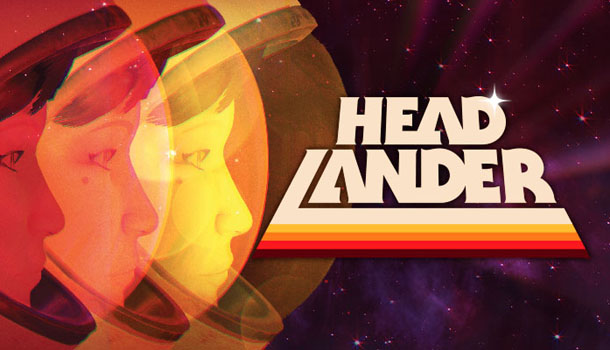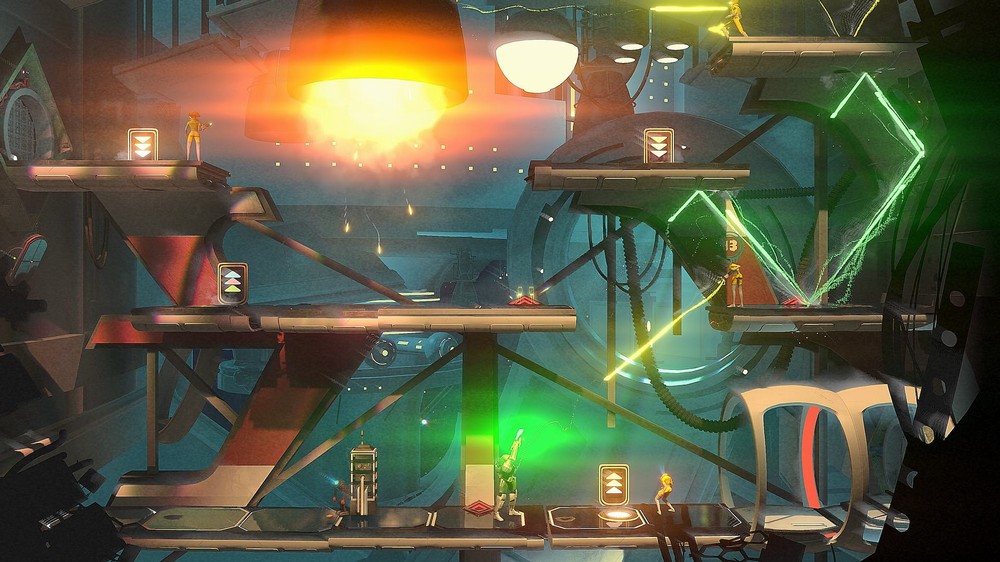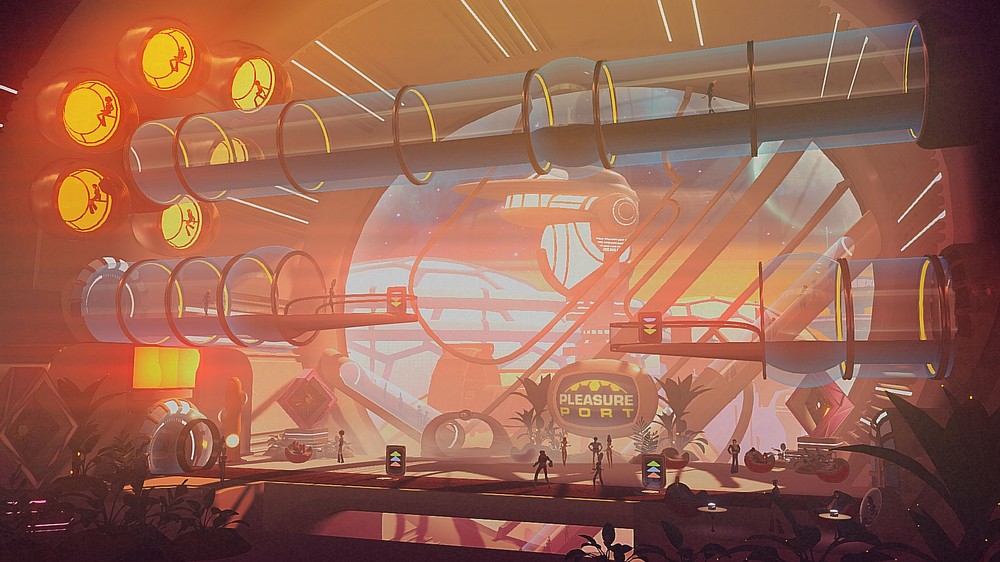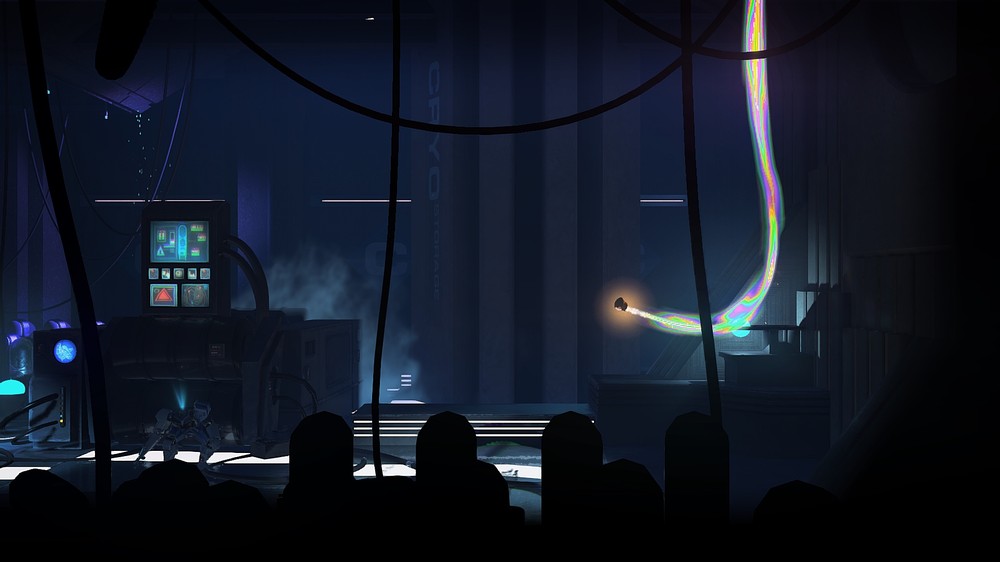Double Fine have always been known for including at least a dash of humor or absurdity into their games, and Headlander is no exception. The concept of the title is itself both original and amusing, with the player taking control of a detached head who finds themselves as the last remaining member of the human race. Thankfully, this head is able to attach itself to a variety of robot bodies, which allow it to complete tasks and explore various science fiction-based settings in order to discover the events leading up to the start of the game, and whether or not the human race is truly finished.
You first take control of this disembodied head onboard the spaceship Starcophagus, where you are taught the basics of navigation and head-attachment, as well as deciphering the color-based security system that runs throughout Headlander. As you work your way from the spaceship, to a space station, and ultimately to a lunar base, the character of R.O.O.D. (who is particularly sassy) determines whether or not your current robot body possesses acceptable security clearance to pass through a particular door. The security clearance ladder runs through the visible color spectrum, with red being the lowest security clearance and violet being the highest. Much of your time with Headlander will be spent locating bodies of the correct color to pass through a specific door, and it’s an easy way to be able to tell if you’re currently in possession of the correct clearance for a certain area.
Headlander presents a number of interested and varied environments for you to explore, and the general feel of the game is reminiscent of 1960s/70s vision of the future, full of humanoid robots, giant, glass-domed space stations and vibrant, pulsating colors. While you’ll always have a particular objective marked on your map, exploration of each area is encouraged and rewarded by the inclusion of both trans-fiber nodes and energy orbs. Trans-fiber nodes provide pre-assigned upgrades to your head, ranging from health and power upgrades to new abilities such as a laser shield or a speed boost that allows you to break through certain doors. Energy orbs are a little more free-form, as collecting enough of them allows you to pick an upgrade of your choosing, which are usually improvements to abilities that you already possess, such as increased melee damage or faster health regeneration.
Though Headlander does resemble a Metroidvania title, the one big difference that I found was that it was quite rare for a region to possess secret areas that were inaccessible with whatever ability loadout that was available at that particular point in the game. This resulted in minimal backtracking and less wasted time trying to reach a particular door that upon arrival reveals itself to only open using a power you’ll gain further into the game. While this doesn’t mean that Headlander is an entirely linear experience, it does mean that you likely won’t be returning to an area once you’ve finished whatever narrative objective is required there.
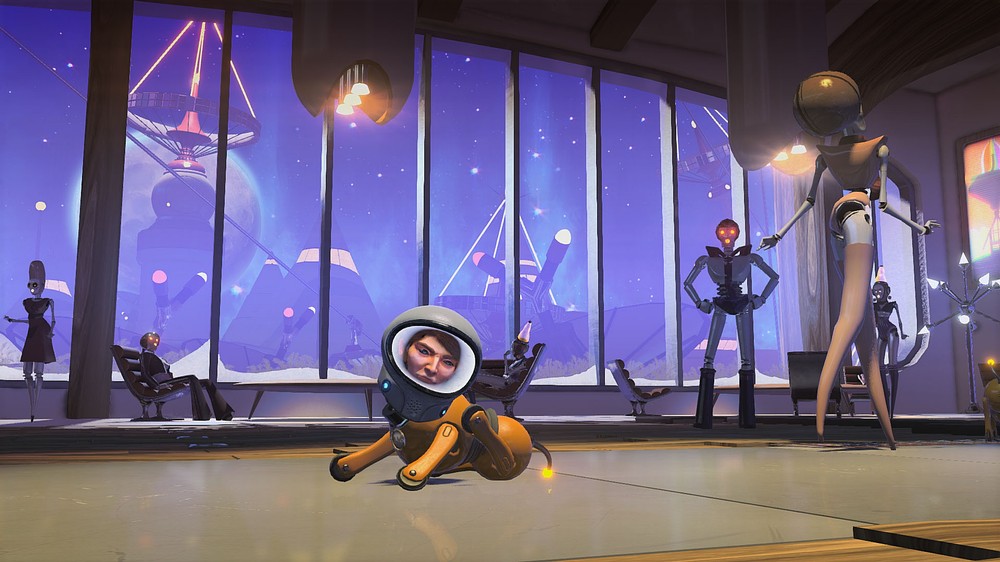 Unfortunately, I found that on multiple occasions throughout Headlander that I was quite pleased not to be required to return to a certain area once I was finished with it, as it’s quite common for you to spend enough time in a region that it outstays its welcome. There’s a decent variety in the locations that the game asks you to go, but once there, you’ll find yourself performing repetitive menial tasks that seem to serve minimal purpose in driving the story forward. Most of the objectives that you’re given involve activating a certain number of a particular item, and aside from making the task take longer, there doesn’t seem to be much reason for there to be more than one of them.
Unfortunately, I found that on multiple occasions throughout Headlander that I was quite pleased not to be required to return to a certain area once I was finished with it, as it’s quite common for you to spend enough time in a region that it outstays its welcome. There’s a decent variety in the locations that the game asks you to go, but once there, you’ll find yourself performing repetitive menial tasks that seem to serve minimal purpose in driving the story forward. Most of the objectives that you’re given involve activating a certain number of a particular item, and aside from making the task take longer, there doesn’t seem to be much reason for there to be more than one of them.
Headlander isn’t a particularly lengthy game, but this stream of repetitive tasks ground the narrative pace to a halt, leaving the four-to-six-hour runtime of the title feeling a lot longer than it should have. It almost feels as if the development team came up with a good idea but weren’t quite sure how to translate that into a fully-fledged gaming experience. There are some interesting set pieces within Headlander, perhaps most notably within the chess-based battle sequence, but otherwise the general concept feels like it has been stretched too thin.
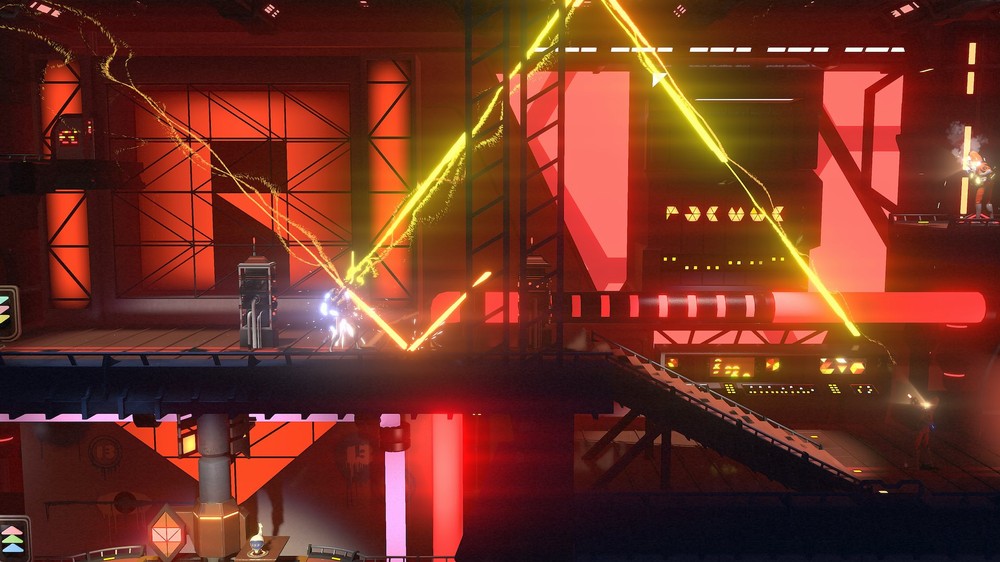 There were elements of Headlander that I enjoyed greatly, especially the exploration and discovery of upgrades and new abilities, particularly as it felt that much of my time exploring was rewarded with something worthwhile. Unfortunately, the game tends to fall flat when you return to the main story, where it feels more like your time is being wasted for the sake of making the game last an extra hour or two. If Headlander was boiled down to its basic parts and lasted only a couple of hours instead of its current, longer runtime, I feel that it would present a much stronger experience, and I would certainly have been willing to recommend it more than I am currently able to.
There were elements of Headlander that I enjoyed greatly, especially the exploration and discovery of upgrades and new abilities, particularly as it felt that much of my time exploring was rewarded with something worthwhile. Unfortunately, the game tends to fall flat when you return to the main story, where it feels more like your time is being wasted for the sake of making the game last an extra hour or two. If Headlander was boiled down to its basic parts and lasted only a couple of hours instead of its current, longer runtime, I feel that it would present a much stronger experience, and I would certainly have been willing to recommend it more than I am currently able to.

